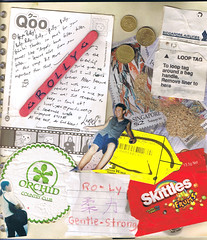
rolly 2a
Originally uploaded by rollycaidic
“To see is to believe!”
I have lots of personal teaching experiences about diagrams. During my first year of teaching in public school, due to lack of enough resources like instructional materials and textbooks, I always ended up summarizing the lesson on a manila paper. Writing down important details of the topic could mean great deal of time and effort. I took for granted the importance of drawings and illustrations because I thought it could also eat most of my time facing my art materials. Until I realized that describing something to my students, which they don’t even have any single clue to what I am saying, is like talking to dogs. I really had a hard time convincing them that cells are real and cells really do exists in our body. Even internal organs are hard to explain if they do not see the organs itself. No matter how much I hardly describe it to my students I think I am just a mime artist to them, acting as if things were true.
That’s a lesson learned for me. Now I am giving equal attention to lectures and diagrams. These two comes hand in hand in teaching not only science but all fields of study. True enough seeing is believing! Words are not enough to convey our thoughts. Drawings, illustrations, graphics etc. these are the teacher’s friends. They bridge imaginations into reality.
There are lots of varieties of diagrams this maybe in a form of pictures, conceptual frameworks, graphs and charts. All of these are used to present ideas which are more appealing to the eyes especially of the learners. It’s a break from the sea of grays. Modern technology like computers nowadays could also be a good medium in presenting diagrams which are fascinating and educational. Likewise improvisation, creativity and resourcefulness could also create innovative educational diagrams even without modern technology. Like the famous quotation says “pictures are worth a thousand words”.


No comments:
Post a Comment